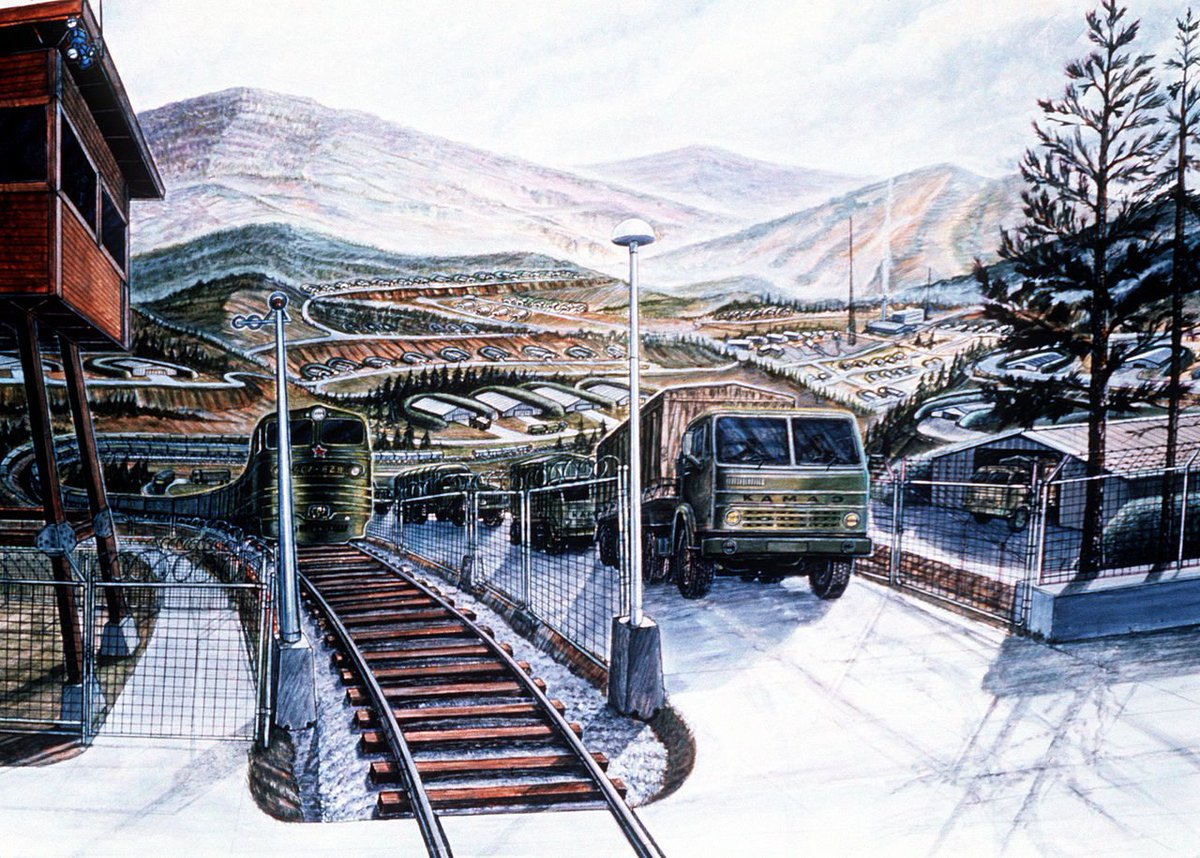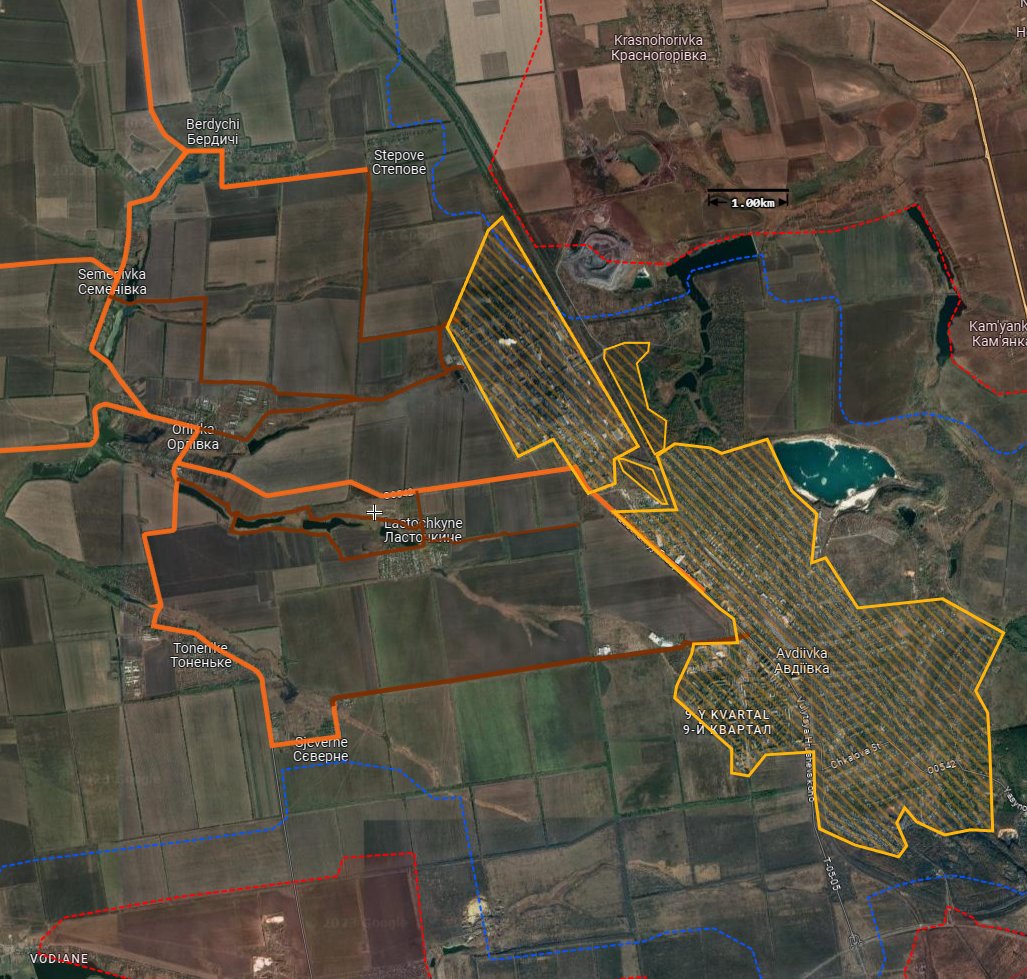The discourse on Ukraine's counter-offensive often oversimplifies Soviet doctrine as rigid mass warfare and NATO- as flexible maneuver warfare.
The truth is far more nuanced, and needed for future discussions.
Thus: Soviet tactical and operational doctrine, a thread.
1/
The truth is far more nuanced, and needed for future discussions.
Thus: Soviet tactical and operational doctrine, a thread.
1/

To keep things simple, I'll stick to the operational and tactical elements of Soviet doctrine during the late Cold War—the most relevant period for us and Ukraine.
Soviet operations were conducted by Armies and Fronts. Division and below would belong in the realm of tactics
2/
Soviet operations were conducted by Armies and Fronts. Division and below would belong in the realm of tactics
2/
"Success in small-unit engagements was dependent on combined arms integration, firepower, and maneuver. Moscow taught that ground and air forces, and combat and support units had to work closely together to achieve an effect that was greater than the sum of their parts"
3/
3/

Soviets prioritized offensive actions, emphasizing concentration of force and firepower through mobility and full mechanization. Their ideal strategy was a strong, early blow to penetrate the enemy's operational depth and disorganize enemy forces.
4/
4/
"Maneuver first with firepower. Firepower is maneuver"
Any Soviet offensive would start with long-lasting massed fires throughout the enemy depth. In addition to artillery, missile troops and air force assets, would be subordinated directly to the Front and Army commanders.
6/
Any Soviet offensive would start with long-lasting massed fires throughout the enemy depth. In addition to artillery, missile troops and air force assets, would be subordinated directly to the Front and Army commanders.
6/

Tactical leaders had direct control over their organic fires, but most fire support was highly centralized to maximise effectiveness during the critical early hours of any operation. However, as operations continued this centralization risked coordination problems.
7/
7/
Air and missile forces would be used to hit enemy command and support elements. Despite this coordination of artillery-, missile- and air forces, the Soviets did not always expect to have air superiority. They expected to operate in contested airspace and relied on anti-air.
8/
8/

"If maneuver forces must be massed, do so rapidly. Disperse them as soon as possible after the task has been achieved."
The Soviets were acutely aware of the danger of long-range fires. Dispersal and mobility were essential. The Soviets focused on attacking from the move.
9/
The Soviets were acutely aware of the danger of long-range fires. Dispersal and mobility were essential. The Soviets focused on attacking from the move.
9/
Attacking from the move would both let the Soviets apply ground forces gradually to a battle and bring together a larger force for a breakthrough when needed. They could also quickly exploit tactical and operational breakthroughs before the enemy could effectively react.
10/
10/

That's not to say that the classic image of armored flotillas heading westwards is not accurate. The Soviets would mass relatively dispersed forces together for tactical engagements. Fast deployment from march formation to rehearsed battle drills was essential.
11/
11/
While the battle drills were often tactically somewhat limited, Soviet operational commanders enjoyed relative freedom of action. The most important objective for them would be penetrating into enemy depth, and isolating, or surrounding enemy maneuver- and support forces.
12/
12/

"Maneuver forces should attack the weakest points in enemy defenses. If necessary, create weak points or holes with nuclear or nonnuclear fires. Bypass enemy strongpoints to strike deeply into his rear."
Soviet offensives would attempt to find the path of least resistance.
13/
Soviet offensives would attempt to find the path of least resistance.
13/
Forward recon elements would attempt to find the weakest points in the enemy line, as well as any useable routes for mechanized forces to go around the defensive positions. The Soviets would then attack on multiple axes at once to exert pressure over the whole frontline.
14/
14/

The job of the first echelon, generally made up of motor rifle formations, was to create a gap in the enemy frontline. Then the second echelon, usually tank formations, would be thrown in to exploit the breakthrough and advance deep into the enemy's operational depth.
15/
15/

If the Soviet first echelon units failed to dislodge defenders, they would then switch to fixing the enemy in place. The operational commander would then commit the second echelon to more successful axes.
Bypassed positions would be reduced after the 2nd echelon had passed.
16/
Bypassed positions would be reduced after the 2nd echelon had passed.
16/
Soviet operations would thus flow rather fluidly, like water around rocks. The high mobility, relative dispersal and echeloned nature of forces meant that the Soviet operational commanders could change the concentration of force, and fires, relatively quickly.
17/
17/

To ensure the success of these fluid mechanized operations, the Soviets would use "forward detachments" in the early phases of the operation to capture key terrain and disrupt enemy operations. Air assault forces could capture bridges or neutralize enemy command posts.
18/
18/

"Deceive the enemy. Attack from an unexpected direction at an unexpected time. Use terrain and weather to your advantage"
We may talk too much about "Maskirovka", but deception was essential to Soviet operations. Keeping the main direction a secret was essential for success
19/
We may talk too much about "Maskirovka", but deception was essential to Soviet operations. Keeping the main direction a secret was essential for success
19/
"There must be unity of command, a single commander for any operation... Adhere to the spirit and letter of a plan. If the plan fails, use initiative to accomplish the mission."
As said before, the Soviet command was often rather centralized compared to NATO armies.
20/
As said before, the Soviet command was often rather centralized compared to NATO armies.
20/

The Soviets did attempt to encourage initiative, but as we can see from the quote above, following the spirit and letter of the plan was often emphasized. The battle drills underline this: the junior leaders especially had a limited playbook, not full freedom of action
21/
21/
On the other hand, the focus on battle drills and doctrinal approaches meant that, in theory, the Soviets could easily make snap decisions on the battlefield and adjust to new tactical situations on the go.
Although casualty-prone, this would retain offensive momentum.
22/
Although casualty-prone, this would retain offensive momentum.
22/
There's a lot more we could talk about here, but it's time to wrap it up.
The Soviets focused on mobile maneuver and combined arms warfare. The major difference to NATO doctrine was the emphasis on the operational level of war and a different approach to the tactical layer.
23/
The Soviets focused on mobile maneuver and combined arms warfare. The major difference to NATO doctrine was the emphasis on the operational level of war and a different approach to the tactical layer.
23/

Adherence to doctrine, plans and battle drills was more important than every individual commander's freedom of action. In addition to this, the Soviets emphasized aggressive offensive action, as well as the volume and concentration of fires more than Western armies did.
24/
24/
There'd be more to talk about, but the things discussed here are enough for future discourse about the Ukrainian counteroffensive and armed forces.
We'll be coming back to this thread with @Black_BirdGroup as we start analyzing the counteroffensive in detail.
25/25 -END-
We'll be coming back to this thread with @Black_BirdGroup as we start analyzing the counteroffensive in detail.
25/25 -END-

-APPENDIX-
Main sources and quotes:
-FM 100-2-1 "THE SOVIET ARMY: Operations and Tactics", US Army 1984.
-Eisenstadt & Pollack: "Armies of Snow and Armies of Sand: The Impact of Soviet Military Doctrine on Arab Militaries", Middle East Journal, 55/4, 2001, pg. 549-578
Main sources and quotes:
-FM 100-2-1 "THE SOVIET ARMY: Operations and Tactics", US Army 1984.
-Eisenstadt & Pollack: "Armies of Snow and Armies of Sand: The Impact of Soviet Military Doctrine on Arab Militaries", Middle East Journal, 55/4, 2001, pg. 549-578

-FDF officer training hyperfocused on fighting a Soviet-style army.
Big thanks for long conversations and feedback from experts and contacts who have a much better academic understanding of the Soviet way of war than I have.
Especially a guy named Dom.
-END OF APPENDIX-
Big thanks for long conversations and feedback from experts and contacts who have a much better academic understanding of the Soviet way of war than I have.
Especially a guy named Dom.
-END OF APPENDIX-
• • •
Missing some Tweet in this thread? You can try to
force a refresh

 Read on Twitter
Read on Twitter






